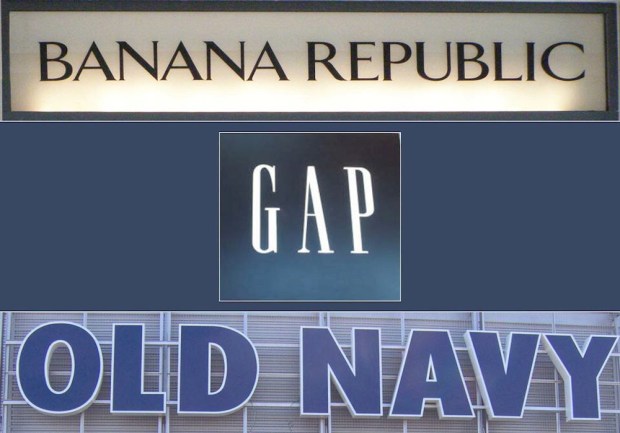The Gap’s Ugly Numbers Table Talk Of Potential Turnaround

Bloomberg went with “dismal” while The Street went with the slight more evocative “dreadful” for describing The Gap’s recent release of its sales data for July and Q2. The colorful group over at The Street also noted that despite showing some early summer signs of renewed strength, Gap bulls and boosters who bought into the good news in June are now getting “thrashed.”
But even the most neutral accounts all attest to the same reality. June promise aside, the Gap had a rough run in July and isn’t expecting great things from the second half of 2016.
“Performance was uneven within the quarter, with challenging traffic in May and July,” Jack Calandra, senior vice president of investor relations, said on a recorded sales call. “As such, we’re maintaining a cautious view of the retail environment in the second half.”
Gap was already having a tough year, and it looks like it is hitting another bump in the road. So how seriously concerned about the wheels coming off the cart should a retail watcher be?
The Long And Winding Road Back
The Gap’s announcement of an uncertain and potentially anemic back end to 2016 follows a front end that wasn’t exactly terrific.
Gap was already having a rather tough year, or to be more accurate Gap Inc was already having another tough year — this one tougher than the tough year that preceded it.
A comeback has long been predicted as in the works.
“With a year of transition behind us, I’m confident that we have the right strategies in place to fuel our long-term growth,” said Gap CEO Arthur Peck back in February’s earnings call with investors. “We made significant progress in 2015, transforming our product operating model, enabling us to be more responsive to trends and market conditions and consistently deliver on-brand product collections. Our brands are strengthening their connections with customers through digital, and especially mobile, enhancements that create richer experiences, whether shopping online or in stores or any combination of channels.”
But the quarter wasn’t showing any tangible results. All three of its store brands were showing decline, and watchers and analysts were significantly less forgiving.
“This has been a disastrous quarter for Gap and one during which all of its main engines stalled and went into reverse,” Neil Saunders, CEO of research firm Conlumino, told Reuters. “While the [Old Navy] brand has been the star of the show for many quarters, the past few collections have been dull and uninspiring.”
Even the normally pretty optimistic Peck was somewhat more circumspect than normal.
“Our industry is evolving and we must transform at a faster pace, while focusing our energy on what matters most to our customers,” Peck said in a statement. “We are committed to better positioning the business to recapture market share in North America and to capitalizing on strategic international regions where there is a strong runway for growth.”
But again, another quarter has passed – and as Gap Inc. prepares to release Q3 earnings, it is seeming increasingly likely that so far it is not going so good on the recapturing that market share plan.
The Latest Round Of Figures
The headline figures causing the flurry of worry around Gap Inc. is the latest release of its same-store sales figures for June, which are indicating a 4 percent drop in July. A decline was not totally unexpected; most analysts polled were looking for losses of 1 percent.
Gap’s losses were not only deeper than expected, they were also broader with all three of the firm’s major brands showing signs of decline in varying amounts. Banana Republic showed the deepest hits, as comparable sales plunged 14 percent in July. The predicted drop had been a much smaller 4.6 percent. Sales by that measure were flat at Old Navy, missing estimates for a 1.1 percent increase. Gap’s sales were down 4 percent, compared with estimates for a 1.5 percent decrease.
